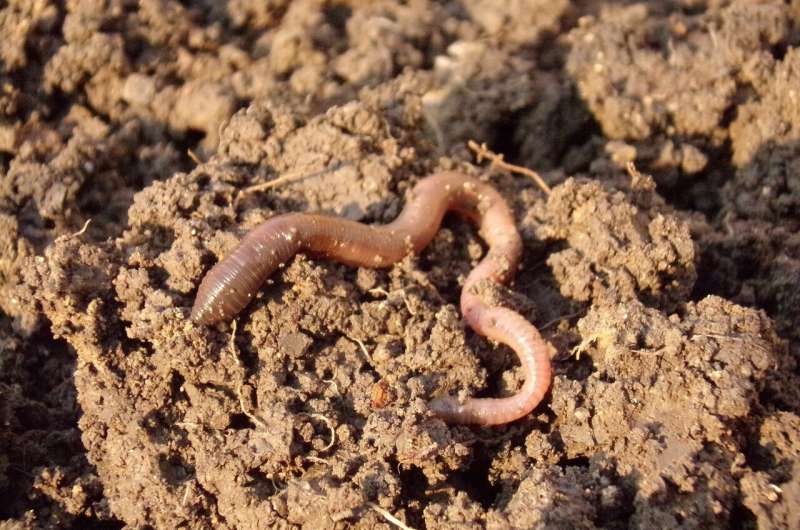Microplastics stunt growth of worms: study

New research shows that the presence of microplastics can stunt the growth of earthworms, and even cause them to lose weight—potentially having a serious impact on the soil ecosystem.
The study, to be published in the journal Environmental Science & Technology, is the first to measure the effects of microplastics on endogeic worms, which live in the top soil.
Academics from Anglia Ruskin University (ARU) examined the impact of biodegradable polylactic acid (PLA), high-density polyethylene (HDPE), and microplastic clothing fibres (acrylic and nylon) on earthworms living in the soil as well as ryegrass sown on top.
After a period of 30 days in the presence of HDPE, which is commonly used in the production of plastic bottles and carrier bags, they found that rosy-tipped earthworms (Aporrectodea rosea) lost on average 3.1% of their weight.
In comparison, the earthworms living in control conditions, without added microplastics, saw their weight increase by 5.1% over the 30-day period.
At the same time the study found that the presence of HDPE led to a decrease in the soil pH. And soil containing PLA, a biodegradable form of plastic, led to a reduction in the shoot height of the ryegrass (Lolium perenne), while both PLA and clothing fibres led to fewer ryegrass seeds germinating.
Lead author Dr. Bas Boots, Lecturer in Biology at Anglia Ruskin University (ARU), said: "The earthworms lost weight overall when certain microplastics were present and grew significantly in weight in soil without added microplastics. However, the specific reasons for this weight loss needs unravelling.
"It may be that the response mechanisms to microplastics may be comparable in earthworms to that of the aquatic lugworms, which have been previously studied. These effects include the obstruction and irritation of the digestive tract, limiting the absorption of nutrients and reducing growth."
Connor Russell, a graduate of the MSc Applied Wildlife Conservation course at Anglia Ruskin University (ARU) and a co-author of the study, said: "Earthworms can be called 'ecosystem engineers' as they help maintain a healthy soil. They do this through ingesting dead organic matter, therefore contributing to the availability of nutrients.
"Their burrowing activity improves soil structure, helping with drainage and preventing erosion. It's therefore highly likely that any pollution that impacts the health of soil fauna, such as earthworms, may have cascading effects on other aspects of the soil ecosystem, such as plant growth."
More information: Bas Boots et al, Effects of Microplastics in Soil Ecosystems: Above and Below Ground, Environmental Science & Technology (2019). DOI: 10.1021/acs.est.9b03304
Journal information: Environmental Science & Technology
Provided by Anglia Ruskin University




















